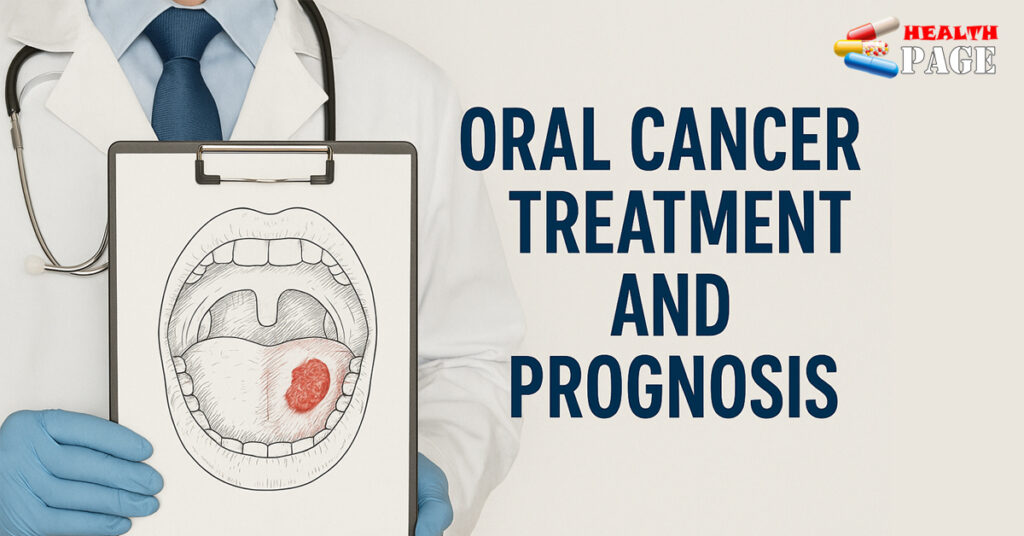Oral cancer treatment and prognosis
Oral cancer accounts for about 30% of head and neck malignancies , and its treatment is a challenge for clinicians. Since the oral cavity plays an important role in speech, chewing, and swallowing, the treatment of oral cancer is very complex and requires the cooperation of multidisciplinary experts. Among oral malignancies , squamous cell carcinoma is the most common, and this article mainly discusses the treatment of oral squamous cell carcinoma.
Over the past 50 years, despite some recent advances in the diagnosis and treatment of oral cancer, the mortality rate of oral cancer has not changed significantly, and 40% of diagnosed patients eventually die from the disease. To date, early detection and correct treatment are still the key to oral cancer treatment. However, since some oral cancers may have no symptoms and are very small in size in the early stages, they are difficult to detect, and once discovered, most have already developed to a later stage. Therefore, it is of great significance to increase the attention paid to oral cancer and improve early screening for oral cancer.
Once the initial evaluation, data collection, and clinical staging of the patient are completed, the next thing to discuss is the patient’s treatment plan. The problem that clinicians and patients need to face together is whether to choose one treatment method or a combination of multiple treatment methods, which not only affects the patient’s cure rate, but also affects the patient’s quality of life. When formulating treatment plans, quality of life issues are increasingly valued.
Cancer treatment is still limited to three basic treatment methods: surgery, radiation therapy and chemotherapy , or a combination of them.
The choice of treatment is influenced by many factors, including the patient’s general health and the treatment options available to the physician.
1. Surgery remains the basis for oral cancer treatment
The advantages of surgical treatment include the ability to obtain specimens for histopathological analysis and the ability to completely remove the tumor at one time . It is generally believed that for most patients with oral cancer in clinical stages I and II, surgical resection plus rapid freezing of the resection margin during surgery is the best option. Although radiotherapy alone can also achieve similar therapeutic effects for patients with oral cancer in clinical stages I and II, the side effects of radiotherapy on the oral cavity in most cases exceed those of surgical treatment. In addition, in patients with head and neck cancer, the possibility of multiple primary tumors is high.
Once other tumors occur again , radiotherapy is required, and the choice of surgery for the first treatment has little impact on them. Oral cancer patients are prone to multiple primary tumors , so if radiotherapy is chosen for the first treatment, it will affect their subsequent treatment. Although radiotherapy can be repeated in some special cases, repeated radiotherapy will increase treatment complications. For patients with oral cancer, negative resection margins are crucial to the effectiveness of surgical treatment, which has been confirmed by many studies. If the resection margin is positive, the patient’s survival rate will still decrease even if adjuvant radiotherapy is given after surgery.
2. Radiation therapy
Radiation exposure to tissue can cause a series of cell ionizations, which damage pathological tissues, especially poorly differentiated cells, which are more susceptible to the effects of radiation. Although normal tissue cells can also be damaged to a certain extent, they can still restore their growth and reproduction capabilities; tumor cells, on the other hand, are destroyed by radiation and cannot be revived. Oral cancer radiotherapy is extremely complex, and only a specially trained treatment team consisting of oncologists , physicists, dosimetrists, and radiographers can achieve ideal results. In addition, modern radiotherapy equipment and technology are also required. The anatomical site, tumor condition, and clinical condition determine whether radiotherapy will be used as the primary treatment or as an adjuvant treatment.
The most important role of radiotherapy in the treatment of oral cancer is to give radiotherapy after surgery if residual tumor cells are suspected during surgery. The scheme of postoperative radiotherapy is not consistent in various research institutions, but the widely accepted indications for postoperative adjuvant radiotherapy are: more than two lymph node metastases found during neck lymph node dissection (some people also believe that postoperative radiotherapy should be performed if one lymph node metastasis occurs); extranodal spread of the tumor ; poor histopathological factors: extensive spread of the tumor along nerves or blood vessels, positive soft tissue borders or close to the tumor ; large primary tumor volume (T3 or T4). It is currently believed that starting radiotherapy within 6 weeks after surgery and ending radiotherapy within 100 days after surgery can help improve the prognosis of patients with oral squamous cell carcinoma.

3. Chemotherapy
In the 1940s, chemotherapy began to enter the field of tumor treatment, and in the 1950s it began to be used for head and neck malignant tumors , but it was mostly used as palliative treatment for advanced cancer cases. In the 1970s, chemotherapy began to be used as an adjuvant treatment to cooperate with radiotherapy and chemotherapy for head and neck cancer to improve local efficacy. At present, the chemotherapy trend for oral cancer is to use adjuvant chemotherapy before and after surgery or radiotherapy as an important means of comprehensive treatment. Its main functions are: increasing local control rate, reducing tumor volume, reducing surgical complications, adjuvant treatment of radioresistant tumors , increasing the sensitivity of tumor cells to radiotherapy, treating distant metastases, and improving the overall cure rate. However, current chemotherapy drugs are moderately or lowly sensitive to most head and neck malignant tumors , and their efficacy is still unsatisfactory.
At present, the timing of chemotherapy has become the focus of many research discussions, so the definition of the timing of chemotherapy is also a key point to understand the results of clinical research on chemotherapy . Palliative chemotherapy refers to the temporary reduction of tumors by chemotherapy for patients who are no longer able to be cured , hoping to improve the quality of life of patients and prolong their lives. Adjuvant chemotherapy refers to chemotherapy for patients who have undergone surgery and/or radiotherapy for the primary lesion . The purpose of treatment is to eradicate hidden lesions in the body , especially distant metastases. Since the tumor can no longer be seen or felt during adjuvant chemotherapy , it is impossible to judge whether chemotherapy is effective based on this point, so the selected chemotherapy drugs must be effective for this type of tumor
Adjuvant chemotherapy.
Preoperative adjuvant chemotherapy (also known as induction chemotherapy ) refers to chemotherapy given before the treatment of the primary tumor . Its principle is to reduce the primary tumor through chemotherapy to increase the possibility of cure. For example, for tumors that cannot be surgically removed , induction chemotherapy can be used to make them surgically resectable . However, the reduction of the tumor after chemotherapy is not centripetal, and there may be tumor cells remaining outside the tumor boundary visible to the naked eye . At present, research on chemotherapy mainly focuses on combining with radiotherapy to avoid organ sacrifice.
The future of oral cancer treatment
Biomarkers are expected to become the key to the treatment of head and neck cancer in the future.
Oral cancer biomarkers are not only potential targets for gene therapy, but they may also be used to guide the selection of appropriate treatment options and help determine whether patients are suitable for surgery, radiotherapy, chemotherapy or combined treatment. For example, patients with high P53 expression levels and low Ki-67 marker levels are more likely to relapse after initial treatment, so these patients should be given more active combined treatments.
At present, surgery still plays a key role in the treatment of oral cancer, and radiotherapy and chemotherapy exist as auxiliary treatment methods. Therefore, surgeons must fully understand the various diagnostic and treatment methods of oral cancer, must learn to analyze their own contributions and mistakes, and must use their professional knowledge to develop a personalized treatment plan for each patient. In addition, they must learn to communicate with colleagues, explain the treatment effects of patients, and ensure the accurate and effective implementation of surgical treatment in the treatment plan. Doctors must provide effective support to patients and their families to relieve the tremendous pressure on patients and their families. We must accept the reality that not all patients can be cured, so we need to get encouragement from cured patients and from those patients who are not cured but benefit from treatment.
Prevention of oral cancer
In addition, we need to make greater efforts in the prevention of oral cancer. In high-income countries, cancer deaths account for 20% of total deaths, while in low-income countries, cancer deaths account for 10% of total deaths. According to forecasts, by 2020, there will be 15,000,000 new cancer patients and 10,000,000 cancer patients dying each year. The increase in numbers is related to the aging of the global population and, of course, the increase in carcinogenic factors. At present, WHO has begun to pay attention to oral health status and has taken action to prevent the occurrence of oral cancer. Early detection of oral cancer and public education will become important directions.



Pingback: Ovarian Cancer ICD 10: Classification, Codes & Treatment Options